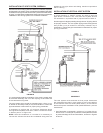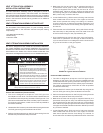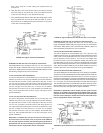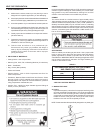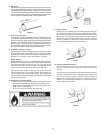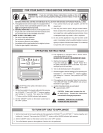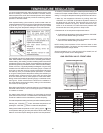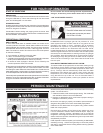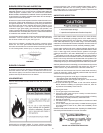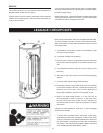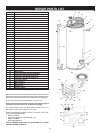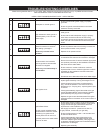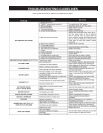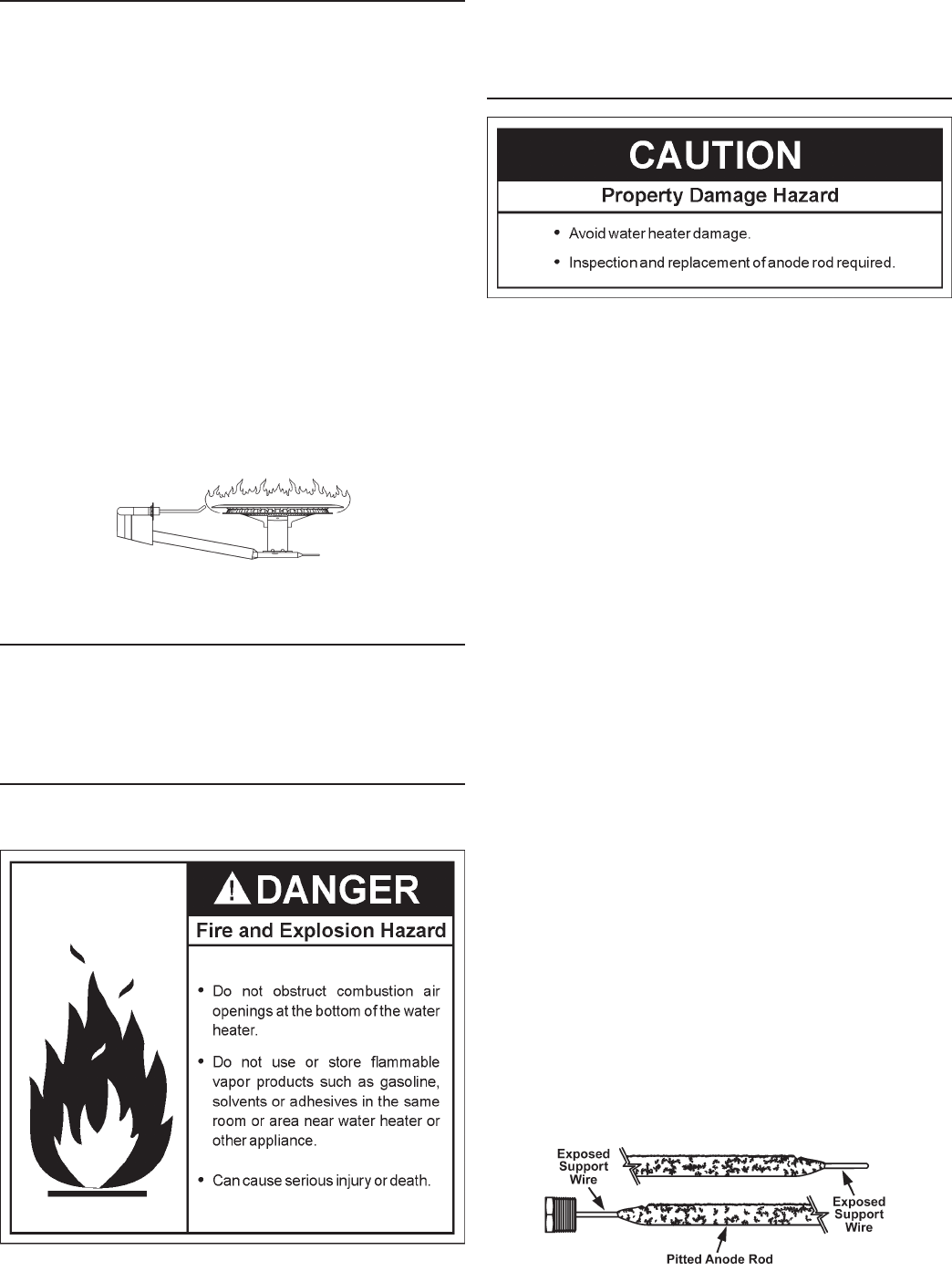
31
BURNER OPERATION AND INSPECTION
Flood damage to a water heater may not be readily visible or immediately
detectable.However,overaperiodoftimeaoodedwaterheaterwill
create dangerous conditions which can cause DEATH, SERIOUS
BODILYINJURY,ORPROPERTYDAMAGE.Contactaqualiedinstaller
orserviceagencytoreplaceaoodedwaterheater.Donotattemptto
repair the unit! It must be replaced!
At least once a year a visual inspection should be made of the main burner
andthehotsurfaceigniterassemblyforproperamecharacteristics
and ignition sequences. This can be done by removing the Outer Door
and viewing the main burner operation through the Viewport on the
Inner Door, see Figure 1. The main burner should provide complete
combustion of gas, ignite rapidly, give reasonably quiet operation, and
causenoexcessiveameliftingfromtheburnerports.Iftheproperame
characteristicsarenotevident(seeFigure27),makesurethattheow
of combustion and ventilation air is not blocked.
You should also check for sooting. Soot is not normal and will impair proper
combustion. A visual inspection of the main burner and HSI should
also be done at least once a year, see Figure 27.
Soot build-up indicates a problem that requires correction before
furtheruse.Turn“OFF”gastowaterheaterandleaveoffuntilrepairs
are made, because failure to correct the cause of the sooting can result
inarecausingdeath,seriousinjury,orpropertydamage.
FIGURE 27.
BURNER CLEANING
In the event your burner or burner air openings require cleaning, turn
theblowerswitchtothe“OFF”positionandallowtheburnertocool.
Call a service agency to remove and clean the burner and correct the
problem that required the burner to be cleaned.
HOUSEKEEPING
Vacuum around base of water heater for dust, dirt, and lint on a
regular basis.
INSTALLEDINSUITABLEAREA:Toinsuresufcientventilation
and combustion air supply, proper clearances from the water heater
mustbemaintained.See“LocatingtheNewWaterHeater”section.
Combustible materials such as clothing, cleaning materials, or
ammableliquids,etc.mustnotbeplacedagainstoradjacenttothe
waterheaterwhichcancauseare.
ANODE ROD INSPECTION
Each water heater contains at least one anode rod, which will slowly
deplete(duetoelectrolysis)prolongingthelifeofthewaterheaterby
protecting the glass-lined tank from corrosion. Adverse water quality,
hotter water temperatures, high hot water usage, and water softening
methods can increase the rate of anode rod depletion. Once the anode rod
is depleted, the tank will start to corrode, eventually developing a leak.
Certain water conditions will cause a reaction between the anode rod
and the water. The most common complaint associated with the anode
rodisa“rotteneggsmell”producedfromthepresenceofhydrogen
suldegasdissolvedinthewater.IMPORTANT:Donotremovethis
rod
permanently as it will void any warranties. The parts list includes a
special anode rod that can be ordered if water odor or discoloration occurs.
NOTE: This rod may reduce but not eliminate water odor problems.
The
watersupplysystemmayrequirespecialltrationequipmentfromawater
conditioning company to successfully eliminate all water odor problems.
Articiallysoftenedwaterisexceedinglycorrosivebecausetheprocess
substitutes sodium ions for magnesium and calcium ions. The use of
a water softener may decrease the life of the water heater tank.
The anode rod should be removed from the water heater tank every
3yearsforinspection.NOTE:articiallysoftenedwaterrequiresthe
anode rod to be inspected annually.
Thefollowingaretypical(butnotall)signsofadepletedanoderod:
*Themajorityoftherodsdiameterislessthan3/8”.
*Signicantsectionsofthesupportwire(approx.1/3ormoreofthe
anoderod’slength)arevisible.
If the anode rod show signs of either or both it should be replaced.
NOTE: Whether re-installing or replacing the anode rod, check for
any leaks and immediately correct if found.
In replacing the anode:
1. Turn off gas supply to the water heater.
2. Shut off the water supply and open a nearby hot water faucet to
depressurize the water tank.
3. Drainapproximately5gallonsofwaterfromtank(Referto“Draining
andFlushing”forproperprocedures).Closedrainvalve.
4. Remove old anode rod.
5. UseTeon®tapeorapprovedpipesealantonthreadsandinstall
new anode rod.
6. Turn on water supply and open nearby hot water faucet to purge air
from water system. Check for any leaks and immediately correct
any if found.
Restartthewaterheaterasdirectedunder“OperatingYourWaterHeater.”
See the Repair Parts Illustration for anode rod location.
FIGURE 28. ANODE ROD DEPLETION.



